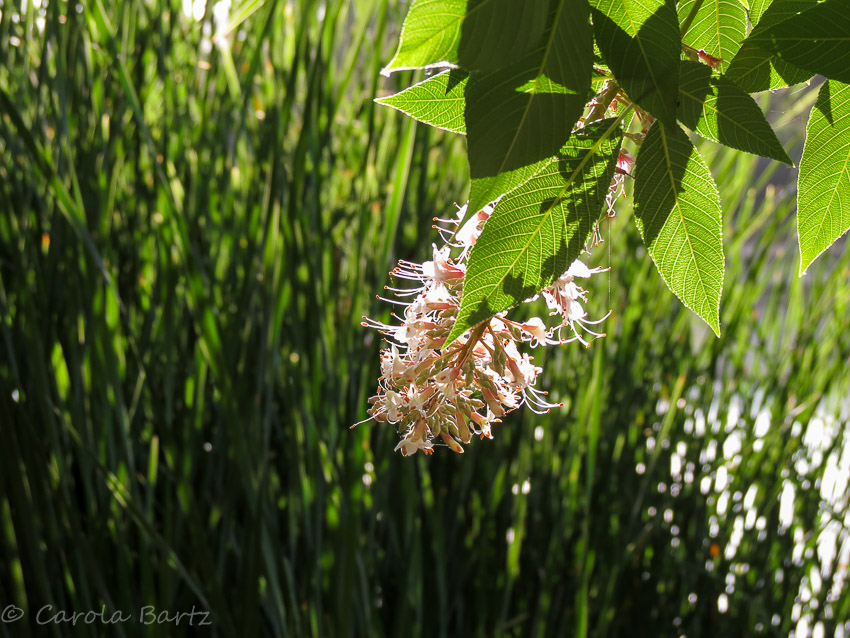The Northern California climate doesn't allow horse chestnuts to thrive here. But we have a different tree that is related to it.
The California buckeye (Aesculus californica) is native to California and southwestern Oregon. Compared to its European relative it is rather short and almost has an umbrella shape. The flower spikes that appear in the spring after the leaves have emerged are white (with just a hint of light pink) with bright orange pollen. The entire tree is covered with these flowers and is quite a sight!
After the flowers are gone and we get into summer the tree does something remarkable: in order to survive the drought of the long summer months it drops all of its leaves and waits for the winter rain. However, the tree will develop its fruit in late summer that ripens in fall. It is sitting in a leathery capsule that hangs from the bare branches.
Slowly, those capsules will split open. I have read somewhere that this is the reason it was named "buckeye".
And then - in November the buckeyes will fall to the ground, either still sitting in the capsule...
... or popping right out of them. Their color is lighter than their European relatives, with reddish hues. It's a beautiful warm and earthy color, fitting for autumn.
The tree is poisonous in all its parts including the nuts. Some animals eat them if they don't find anything else, but usually they go unnoticed and just make new buckeye trees.
There are several buckeye trees at the lake and every autumn I check when the buckeyes will drop. This year they started to fall just last week. I gathered up three of them to bring home and use for decoration; the rest I left where they dropped. However, whenever I am at the lake I take a short detour to check how many more have fallen.























